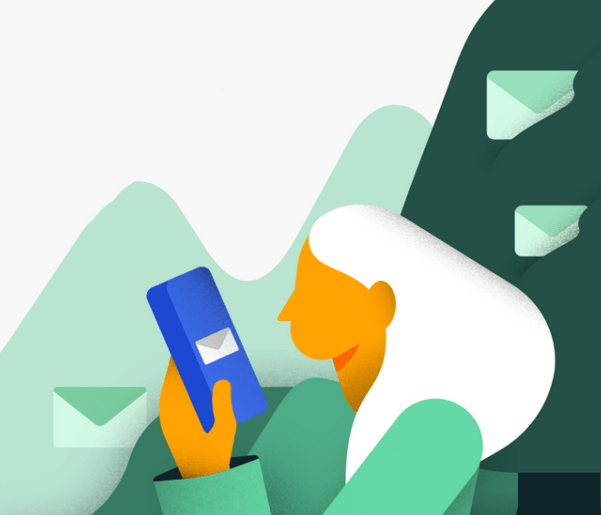BY JOY GENDUSA
Use these three key tips to successfully incorporate personalization into your marketing.
In the early 2000s, Starbucks made writing customers’ names on cups a standard. Every time you ordered a drink, the barista would make sure your first name was written right on your grande mocha latte.
However, no one would have guessed that this simple, personalized gesture by Starbucks would become the next viral meme. With millions of different names to nail down, errors would surely be made. The problem was that some misspellings weren’t just a little wrong, they were very wrong — so wrong that the internet loved it.
Personalizing every drink seemed a daunting task, but the payoff was worth it — even when you factor in those viral flubs. Snapping a photo of your morning Starbucks is still an Instagram mainstay to this day, regardless of whether they get your name right.
Starbucks cashed in early on something people intuitively crave: personalization. A recent study on consumer engagement found that 86% of consumers feel personalized experiences increase their loyalty to a brand, while 66% said they would quit a brand if their experience wasn’t personalized.
Here are three ways you can incorporate personalization into your marketing without having to ask, “How do you spell that?”
1. Address every prospect by first name using dynamic or variable data
Luckily, computers are much more reliable than the human hand when it comes to spelling names. You can add prospects’ first names to mailers and emails to grab more attention and make a longer-lasting impression.
Leveraging someone’s first name is a good step toward creating a personalized experience. One study found that personalization in marketing, including naming, can significantly improve brand attitude and purchase likelihood without being perceived as intrusive.
Hopefully, you’ve already crafted emails using dynamic first-name codes that automatically substitute each recipient’s name into every email. You can also incorporate first-name tags into your subject lines for an added boost.
In the specific case of direct mail, research shows that most people prefer personalization. One study found that the response rate to direct mail increased by 135% when it was personalized by the recipient’s name and was in full colour. When all factors were combined — meaning name, colour and database information were personalized to each recipient through something known as variable data — the response rate went up even higher to 500%.
When you add that on top of the fact that studies put direct mail’s response rate at 500-900% better than other advertising channels, you have a powerful tool for boosting your bottom line.
The key with personalization is creating a personal connection without coming off like you are invading their privacy. Any information that you use should be either public record or first-party, provided directly by your customers and clients. Once you have the data, put it to good use with personalized messaging.
2. Target prospects based on context and interest rather than demographics
Marketing trends will have you targeting buyers like a game of Guess Who. Is my ideal customer a man or a woman? Are they older or younger? Do they wear a hat?
Demographic-based targeting focuses on who you want as your customer — but not the why or when behind the customer’s own experience.
But we can flip the script with contextual targeting, which focuses on the why and when of delivering ads. For example, with contextual search, a person who looks up “landscape lighting ideas” will see an ad about that same topic in their feed. This allows shoppers to find you faster.
You can also use geotargeting and a little creativity to find people likely to want or need your product or service. For example, if a woman often visits an organic grocery store or vitamin shop, she might respond well to other types of wellness products or services. A gym could target her and offer a month of free membership or a free yoga class at a studio.
The future of this digital marketing strategy anticipates prospects’ needs before they even start looking to fulfil them.
3. Automate responsive triggers that will personalize the customer journey without extra workload
Personalization is a great way to get prospects interested and even lead them straight to a sale, but what if their attention gets lost along the way, or you want them to bring them back for repeat purchases?
Automated marketing can help fill those gaps. Using the same example from above, a woman who is focused on wellness may see a yoga studio’s ad and visit their website to learn more. That is certainly a win. However, how do you get her to return to your website if she leaves without converting? Realistically, only a fraction of your website visitors will convert, after all.
Retargeting ads are an obvious answer that is hopefully already in your arsenal. Personally, when it comes to re-capturing attention, I’m for pulling out all the stops — and that means leveraging the high response rate of direct mail. Using a relatively new technology called direct mail retargeting, you can automatically retarget unconverted website visitors offline. With retargeted mailers, the woman in the above example would receive a mailer offering her a free yoga class within 24 hours of a website visit.
Abandoned shopping carts are another way to funnel interested buyers to a close. Send emails or postcards to prospects who put items in their cart but never followed through with a purchase.
Your message could say, “Forget to check out? Come back — we have a special offer just for you!”
The type of automation you put in place will be based on your specific industry. Take some time to think about actions and behaviours that could trigger a mailer or digital ad, and you’ll be on your way to a future of business growth and success.
BY JOY GENDUSA
ENTREPRENEUR LEADERSHIP NETWORK® CONTRIBUTOR
Founder/CEO of PostcardMania. Joy Gendusa founded PostcardMania in 1998 with just a phone & a computer (no funding or investments), and today we generate over $100 million annually with 365 staff. I’m passionate about helping small businesses succeed at marketing and grow — because when small business does well, we all win.















